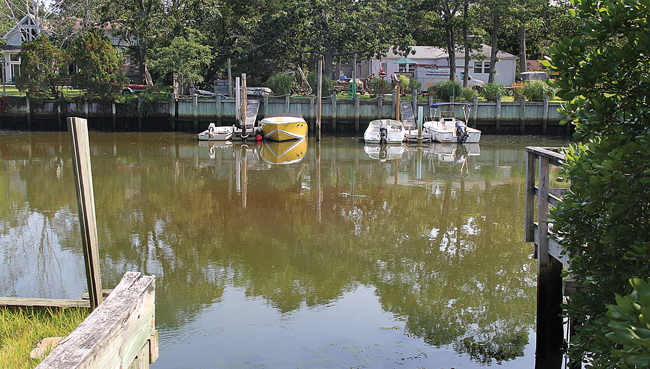‘Low levels’ of rust tide confirmed in Peconic Estuary

For the first time this season, rust tide has been detected in the Peconic Estuary, experts confirmed Tuesday.
Chris Gobler, a marine biologist at Stony Brook University and leader of the Long Island Coastal Conservation and Research Alliance, said the harmful algal bloom has been detected in East Creek, on the north side of Flanders Bay in South Jamesport.
“We positively identified it, though it is at low levels,” he said. “It is definitely in the water and wasn’t there [when we tested] just a week ago.”
In an Aug. 6 release, Mr. Gobler identified areas across the East End affected by the phenomena, noting that, the location and timing of this year’s blooms have “caught scientists by surprise.”
In the past, rust tide had first emerged in the far-western Peconics — last season on Aug. 16 — gradually spreading east. It did not appear in East Hampton waters until Sept. 6 and persisted there through October.
This year rust tide was first detected in East Hampton, spreading to nearby harbors including Sag Harbor and Three Mile Harbor, according to the release.
“The rust tide algae Cochlodinium has been notorious on Long Island since it first appeared in 2004, having been responsible for the deaths of both finfish and shellfish,” Mr. Gobler said.
It is the 11th consecutive year rust tide has been detected in East End waters.
During a press conference in April, Mr. Gobler said he hoped to examine rust tides in Peconic Bay more closely this season, as 2012 and 2013 brought rust tides that swept through the Peconic Bay and appeared to have ruined promising scallop harvesting areas.
Mr. Gobler said he is investigating whether rust tide has also appeared on the south side of the Peconics, in the area of the Long Neck Royal Canal by Royal Avenue North in Flanders.
Area resident Roy Jager contacted the News-Review seeking help in identifying poor water quality in the area after killifish, which he had been catching to use as bait, started dying in his trap for no apparent reason.
Patches of reddish murky water could be seen within a few hundred feet of his trap.
“It definitely looks like rust tide,” Mr. Gobler said of a photo of canal waters. “Given it has shown up on the other side of the bay it’s highly likely it is.”
Mr. Gobler offered to do water testing in the area. The results will become available at the end of the week.
If rust tide is present, it could explain the sudden fish die-off, he said.





